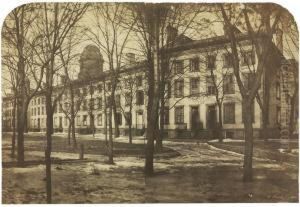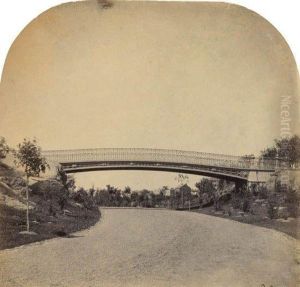Victor Prevost Paintings
Victor Prevost, born in 1820 in France, was a pioneering photographer during the early days of photography. He initially trained as a painter in Paris, studying under Paul Delaroche, a prominent French painter of that time. Prevost's interests later shifted from painting to the new and exciting field of photography, which was rapidly developing following the introduction of the daguerreotype process by Louis Daguerre in 1839.
Prevost moved to the United States in the 1850s, where he became one of the earliest practitioners of photography in New York City. He was particularly known for his calotype process, an early photographic technique that used paper coated with silver iodide, which he learned from Gustave Le Gray, another important figure in early French photography. Prevost's work as a photographer was innovative for its time, and he was among the first to experiment with paper negatives in the United States.
In New York, Prevost taught photography and operated a studio. His contribution to the medium was not limited to his own practice; he also played a significant role in educating and influencing a generation of American photographers. Prevost's photographs were characterized by their attention to composition and detail, often capturing the urban landscape and architecture of New York City. His body of work provides valuable insight into the city's environment and society during the mid-19th century.
Despite his significance in the early history of photography, Victor Prevost's contributions were largely forgotten after his death in 1881. It was not until later in the 20th century that his work was rediscovered and appreciated by historians and collectors. Today, Prevost's photographs are recognized for their historical value and as early examples of the artistic potential of photography.

